Kale is an incredibly nutritious and diverse vegetable that comes in many varieties and colors. In this blog post, we’ll explore 23 different types of kale and provide information on how to use each one.
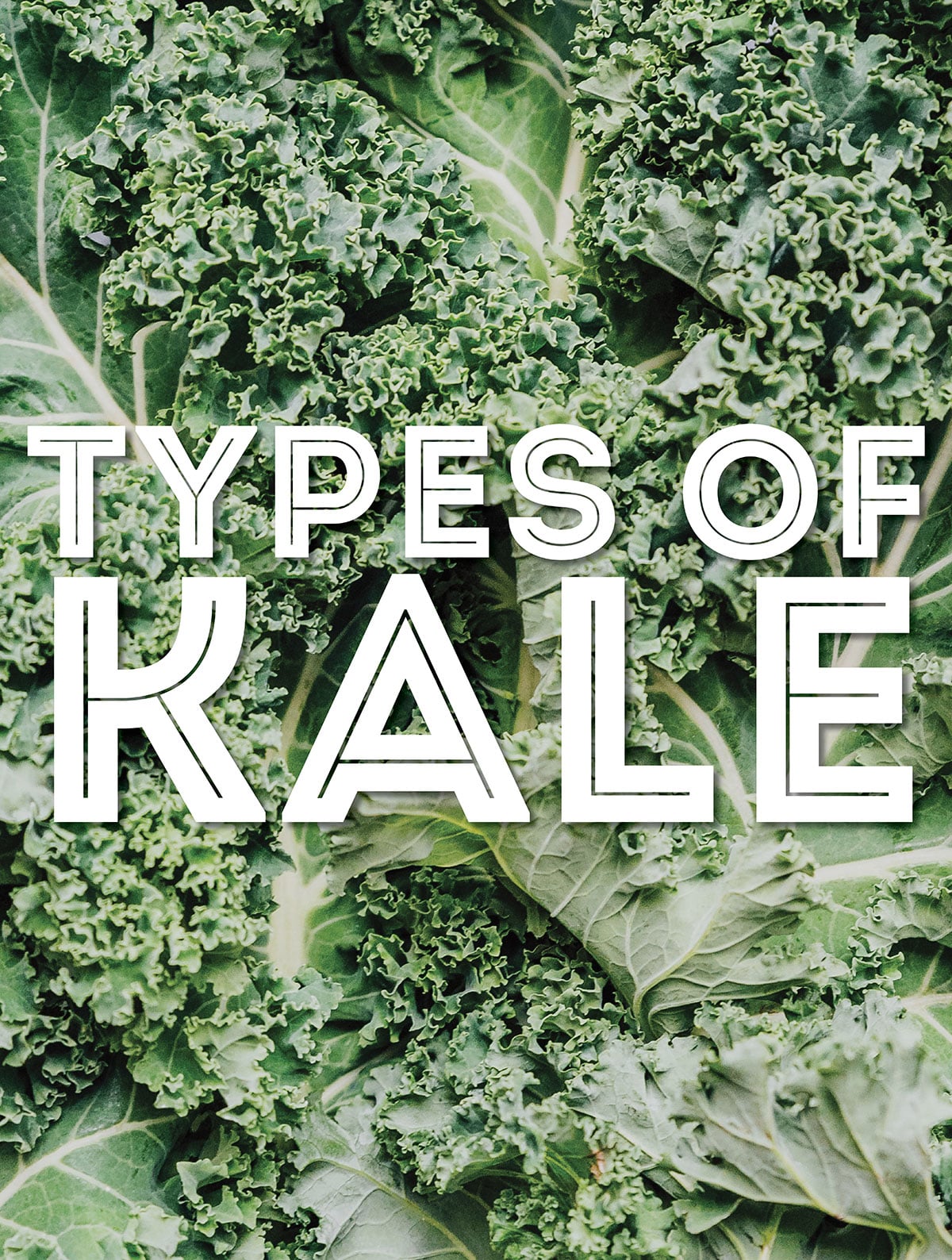
What is kale?
First, a bit about kale itself! Kale is an ancient cultivar of cabbage that originally came from the Eastern Mediterranean region, primarily modern-day Turkey. The name was spelled “Cale” in Medieval Britain, and prior to this, it came from the Latin term “Caulis” meaning cabbage. Kale has been cultivated for thousands of years and was eaten in Greece as early as the 4th Century BCE. It wasn’t until the 1800s that kale made its way to the United States and became popularized in dishes like kale salads.
Kale Nutrition
We don’t like to say that anything is a “superfood”, but if we were to do so…..kale is it. According to the USDA, a 100 gram serving of raw kale has only 50 calories, but it provides:
- 308% of the RDA of Vitamin A
- 200% of Vitamin C
- 1,021% of Vitamin K
- 3.3 grams of protein
- 2 grams of fiber
Kale has a pretty impressive array of other vitamins, minerals, and omega-3 fatty acids!
Is kale keto-friendly? Yes! According to the USDA one cup of raw kale only contains 1g of carbs. You can eat all the kale you want on a keto diet.
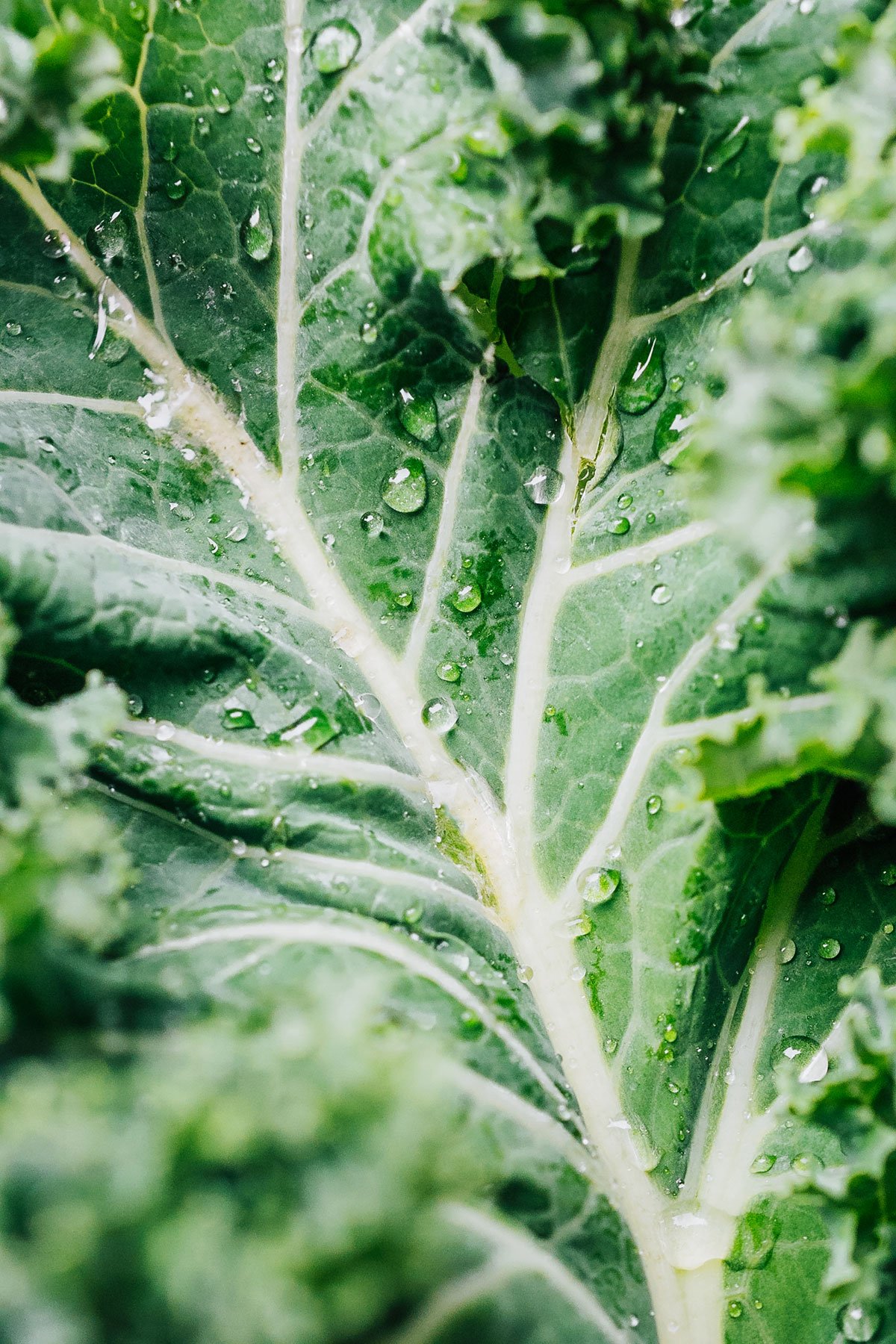
Types of Kale
Kale comes in many varieties and colors. While deep green is the most common, it can also be found in yellow-green, purple, red, pink, lavender, blue, and white, and leaves can be either flat or ruffled.
Many kale varieties are slightly bitter, but kale can also be spicy or sweet. One method to reduce bitterness is to cut the stem from the leaves and marinate them with olive oil in the refrigerator for 24 hours. This will make them more tender and less bitter.
- Abundance Kale
- Baby Kale or Microgreens
- Bear Necessities Kale
- Black Magic Kale
- Beira Kale
- Chinese Kale
- Curly Kale
- Darkibor Kale
- Dazzling Blue Kale
- Japanese Flowering Kale
- Lacinato Kale
- Ornamental Kale
- Prizm Hybrid Kale
- Purple Kale
- Red Russian Kale
- Red Ursa Kale
- Red Winter Kale
- Redbor Kale
- Siberian Kale
- Thousand Head Kale
- Tronchuda Kale
- White Russian Kale
- Winterbor Kale
Abundance Kale
This microgreen-sized plant is perfect for salads and is a great option if you want to grow your own kale in a home garden but don’t have a lot of space. Its small size allows it to be pot-grown or grown between other plants in your garden, and its rapid growth will support multiple harvests. Abundance kale has a taste that supports raw eating, unlike some other types of kale.
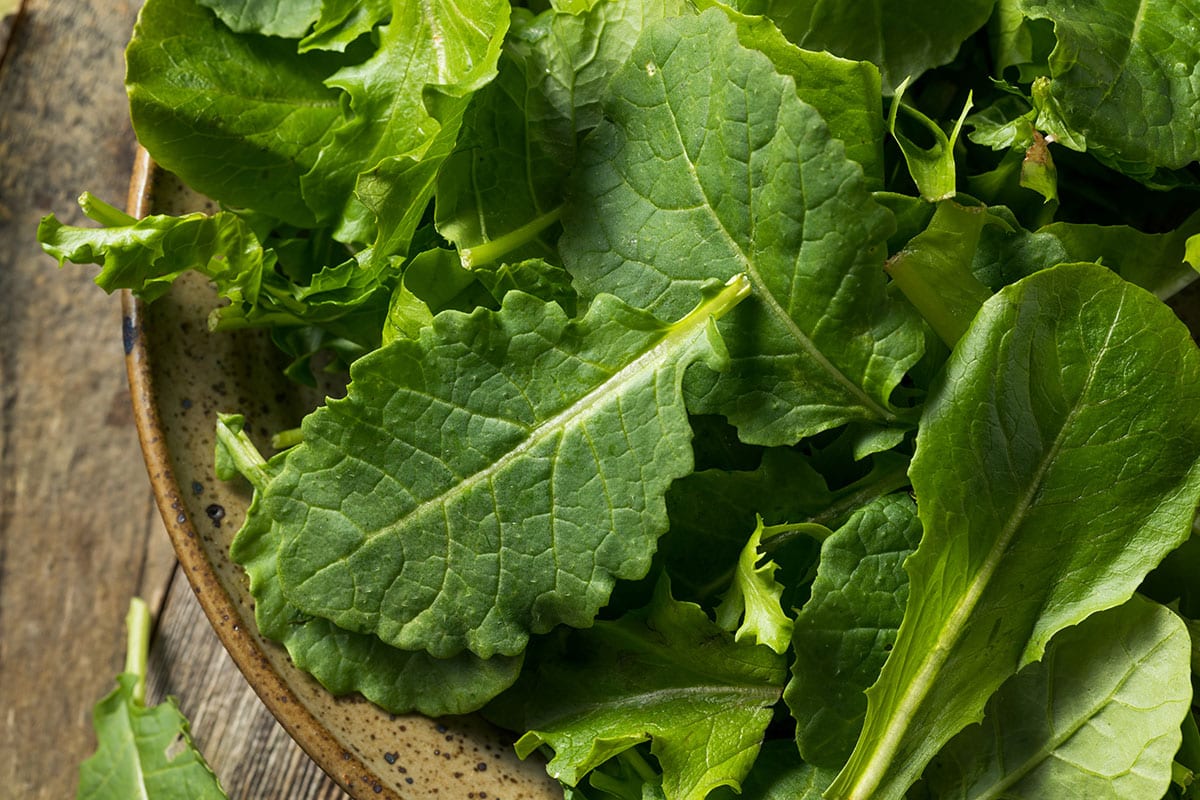
Baby Kale or Microgreens
Baby kale is a young kale that is a good option for salad mixes. You’ll often find it in salad mixes at the grocery store. This is a great option if you haven’t been a kale eater in the past. You don’t have to add a lot to your salad to give it a big nutritional boost, and your grocery likely has a variety of sweet kale salad kits that make eating your veggies easy.
If you do use it in cooked recipes, it does not need to be cooked as long as other more mature kale varieties. If you are growing kale at home, you can actually treat most varieties as baby kale by harvesting them early, which often allows you to harvest it in less than 30 days. Some seed companies sell seeds specifically labeled baby kale as they select varieties best suited to this use. Try baby kale in this kale salad. Baby kale is also a good option as a lettuce substitute in your sandwiches to give them a nutritional boost.
Bear Necessities Kale
This kale cultivar is a cross between Russian and Siberian kales. It is a sweet kale with a mild flavor, making it good raw. Homegrown, it is ready in less than 30 days or grows to full size within 60 days. It is also a cold-resistant variety.
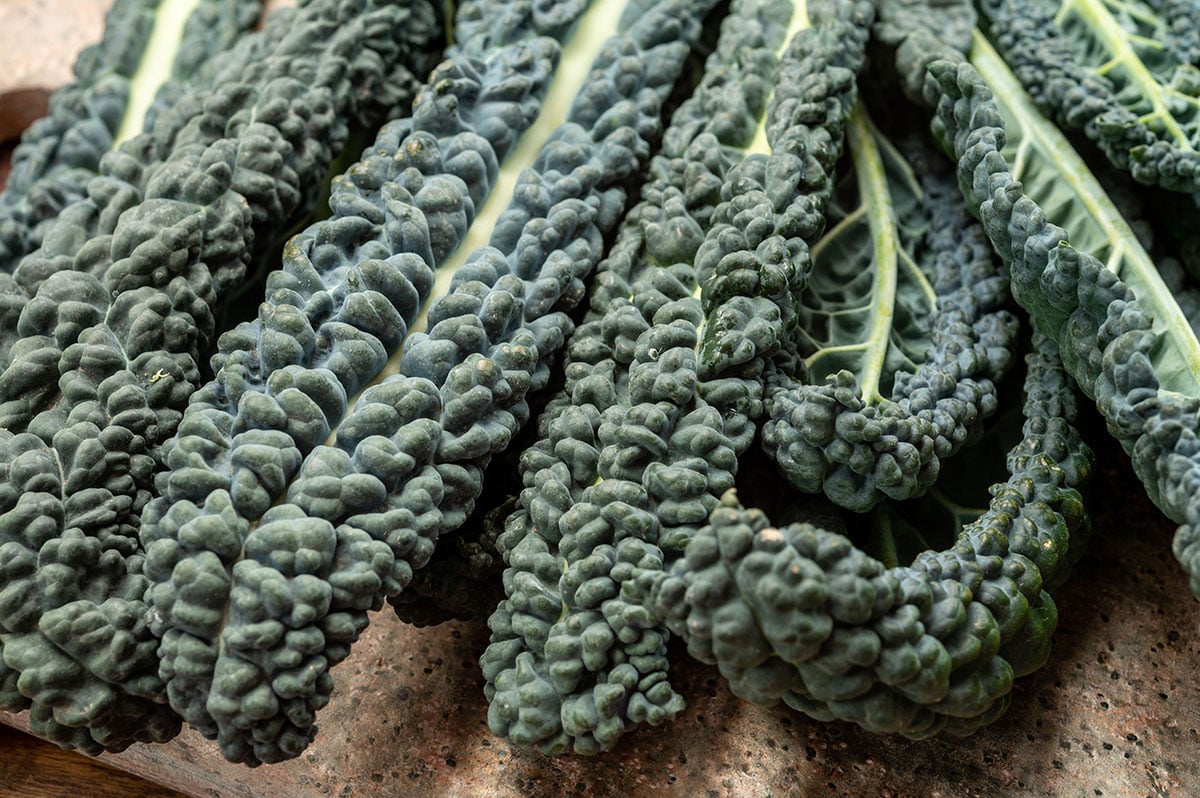
Black Magic Kale
Black magic kale has dark blue-green leaves and is considered one of the mildest tasting kales you can buy or grow. This pesto pizza with goat cheese and kale recipe would be a great use for this mild kale variety.
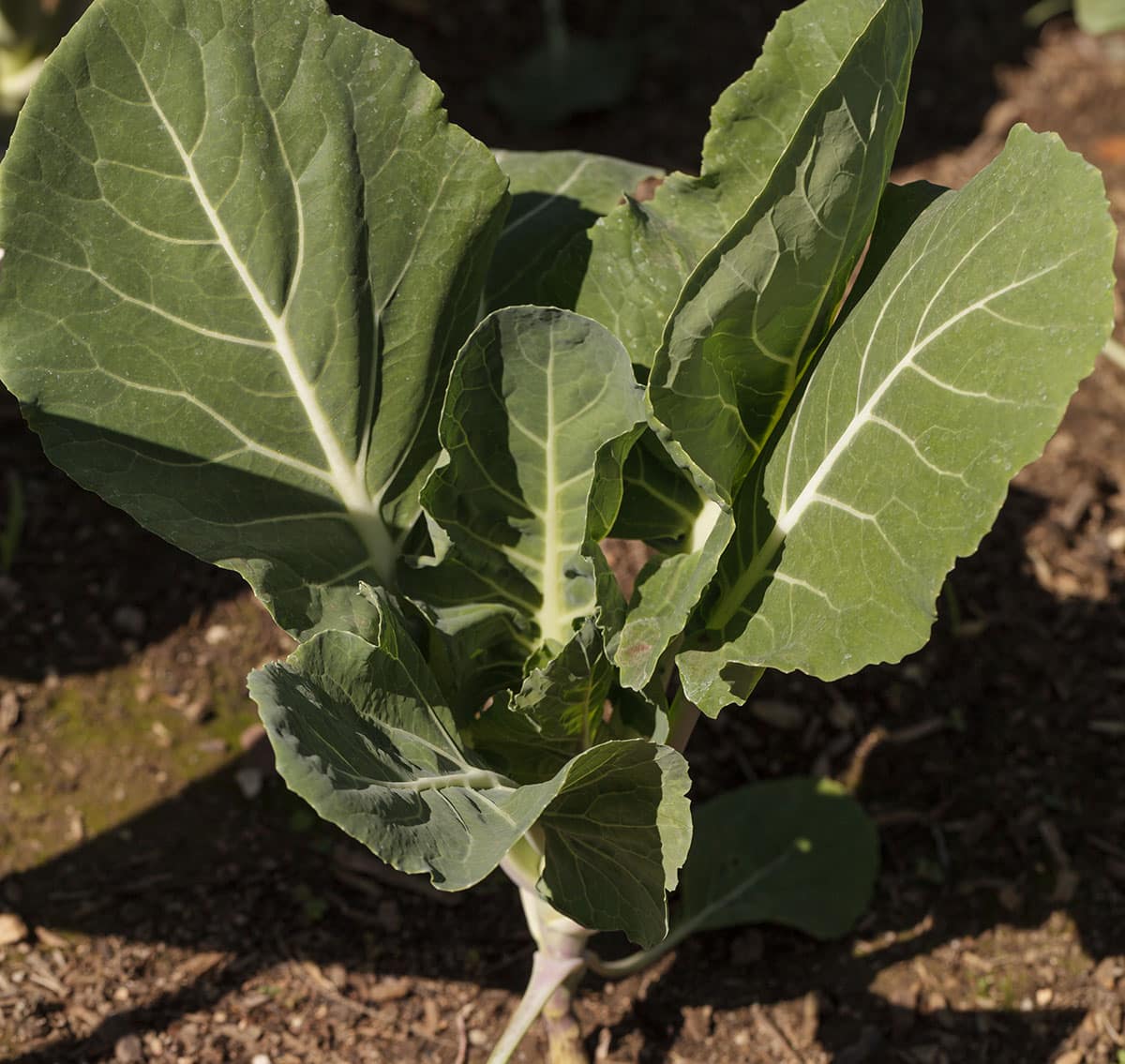
Beira Kale
Beira hails from Portugal and is known as both Sea Kale and Portuguese Cabbage. In Portugal the dark green leaves are used mostly in soup, but the stems are also eaten as one might a piece of celery. Ordinarily, kale stems are best discarded
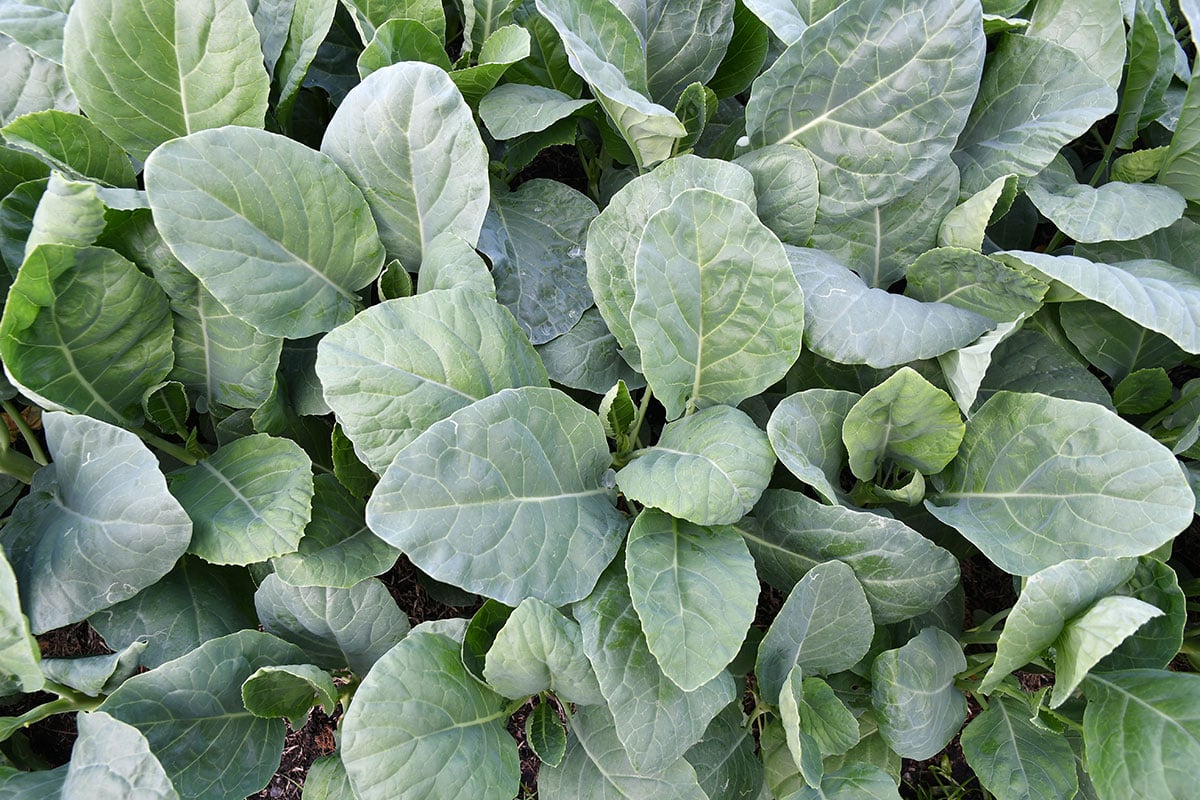
Chinese Kale
Chinese kale bears a resemblance to broccoli, and the stems are often cooked as one might broccoli stems. This is a good variety for use in stir-fry or just sauté and eat. It is also known as Gai Lan or Chinese broccoli. It is a bitter kale variety used in stir-fry and all manner of Chinese cuisine. Use it in recipes featuring a sweetened sauce to counter the bitterness.
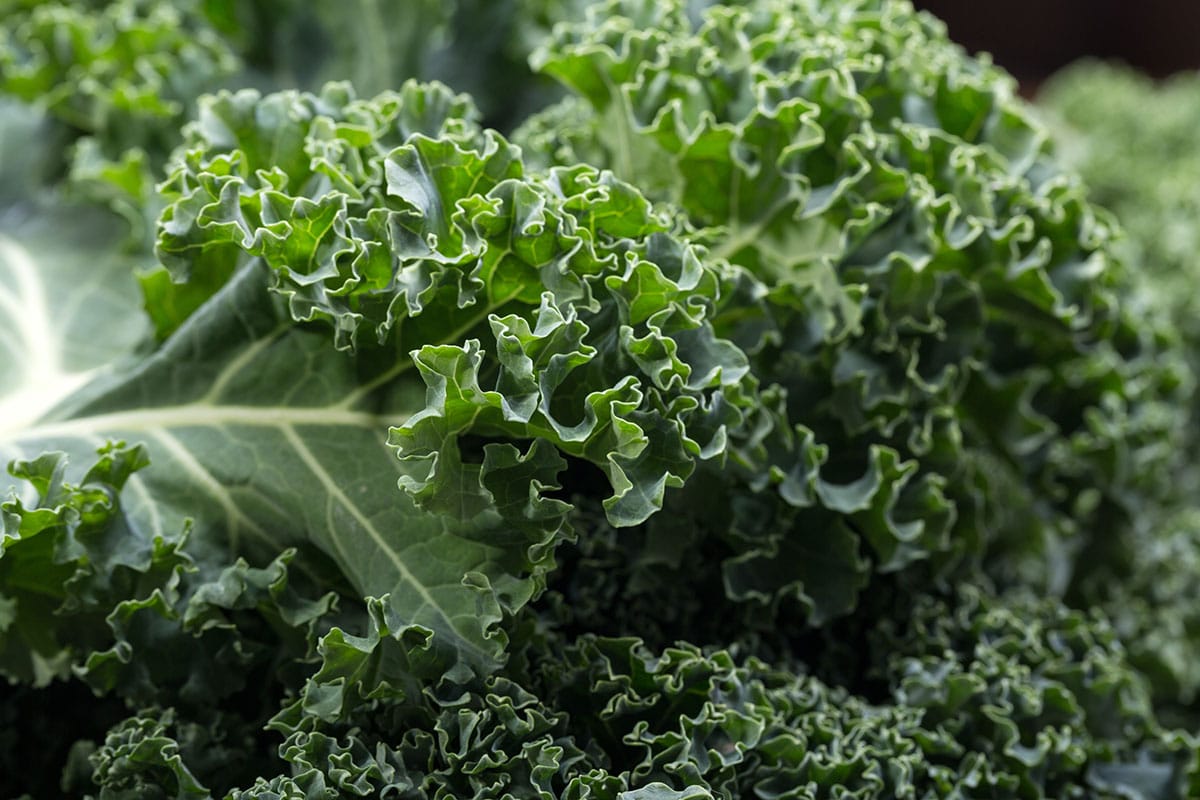
Curly Kale
Curly kale is a deep green variety that is generally cooked vs cut into salads. Curly kale makes great kale chips, and is readily available at most groceries. This is a somewhat bitter kale that can be difficult to cut so most people don’t generally add it to salads. Curly kale is popular with home gardeners, and it gets a bit sweeter with light frost. This readily available kale is easily used in any of these kale recipes.
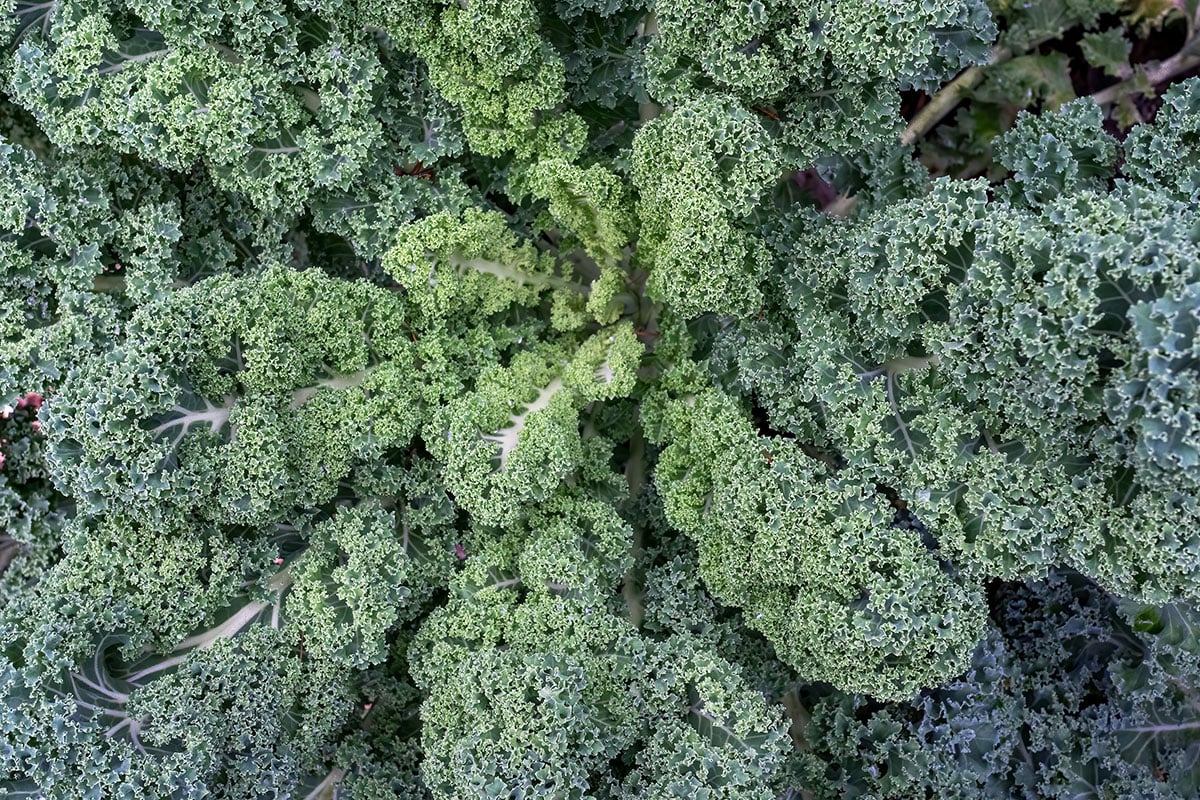
Darkibor Kale
Darkibor is a variety of curly kale with dark green highly curled leaves. The curled leaves make well shaped kale chips. If you cut this variety early, as a baby kale, it goes well in salads otherwise you are best to cook it. Perhaps sautéed in this creamy orzo with caramelized onions and kale.
Dazzling Blue Kale
The name of this kale says it all. The blue color can be dazzling and aesthetic. This is a variety of Lacinato Kale (see that type below) and as such is flavorful and tender. It is perfect fresh in salads or in smoothies. Give Everyday Kale Salad or Roasted Chickpea Kale Salad a try.
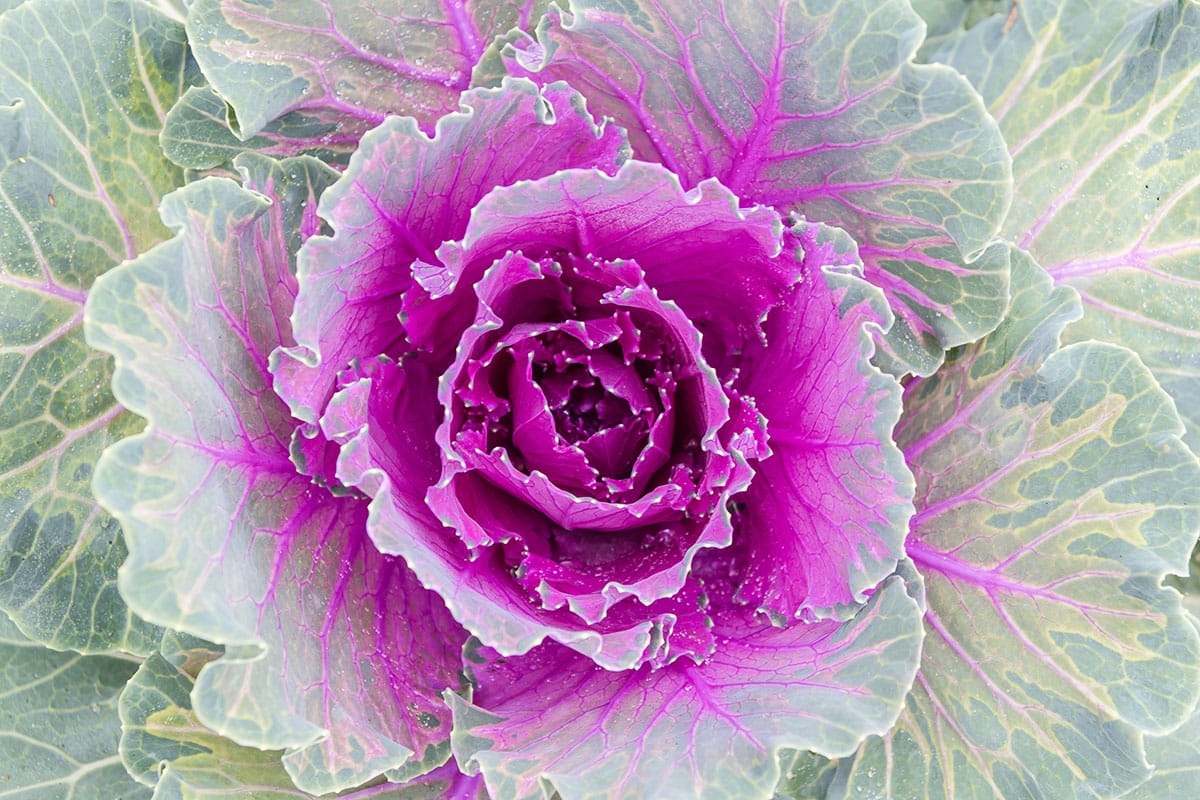
Japanese Flowering Kale
This variety could easily be added to the ornamental kale category (see below) as it is very aesthetic, but it is often eaten raw unlike most of the ornamental kale varieties. In Japan it is called Habotan and is, like most ornamental kales, used to provide color to their gardens.
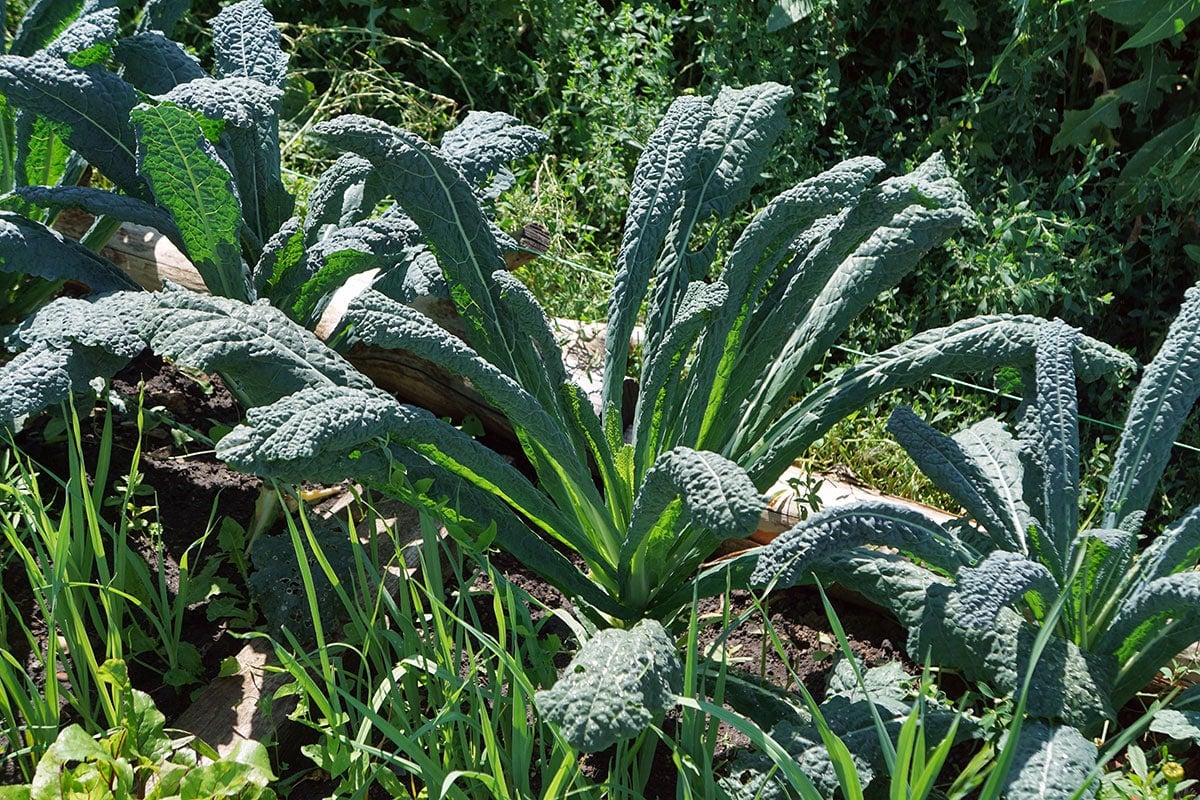
Lacinato Kale
Lacinato is also known as Nero di Toscana or Dinosaur Kale.This is a tender, well more tender than most kale varieties, and less curly kale that is great raw in salads. The tender leaves require less massaging than other kales. As at least two of the names suggest, this kale is popular in Italy where it originated (Tuscany).
While it is great in salads it also holds up well cooked, not turning to mush as readily as some leafy greens. In many of the kale varieties discussed in this post, we say they are cold-resistant. The Lacinato is considered a heat-resistant variety, so if you are a southern gardener this may be the variety for you. Give it a try in these roasted vegetable buddha bowls or just about any kale recipe.
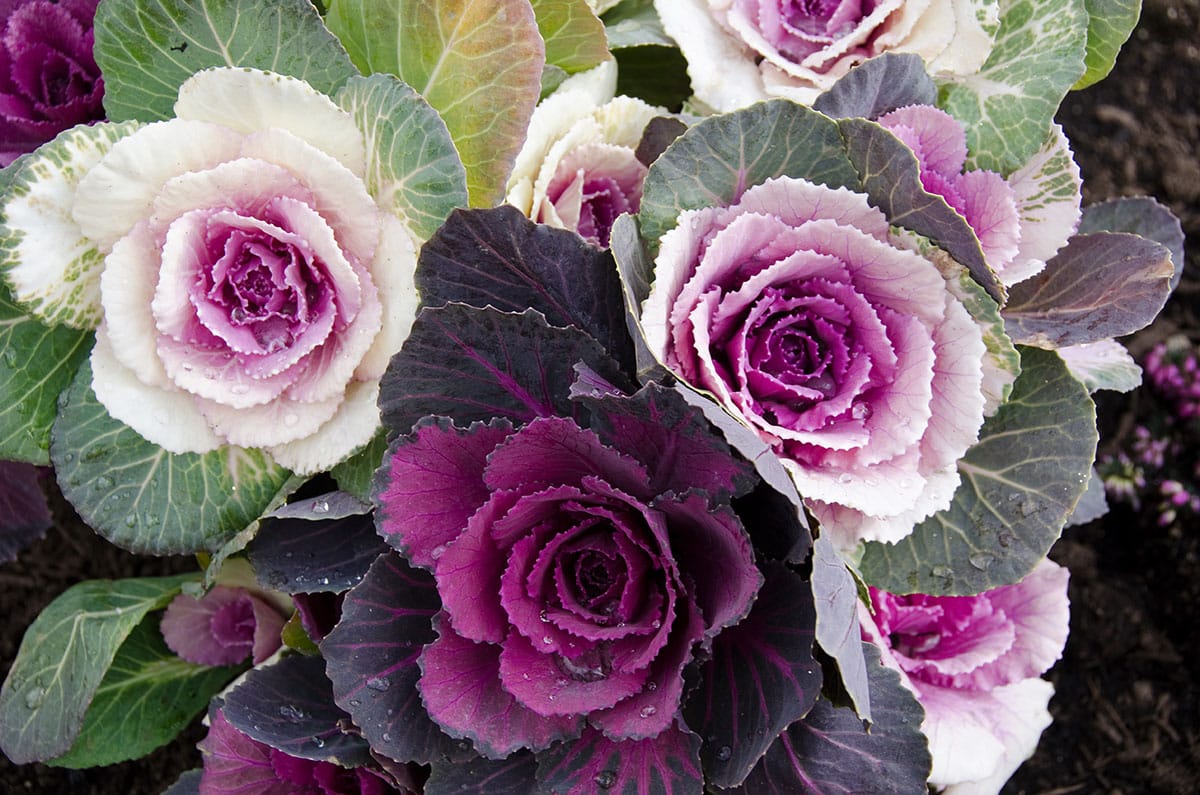
Ornamental Kale
Ornamental kale varieties are grown for their aesthetics rather than their taste. Some flowering kale varieties can be quite stunning. These types of kale, however, tend to be tougher, less tasty, and often more bitter than other types.They are generally used in ornamental gardening or as a garnish, but they are certainly edible and as nutritious as most other varieties.
A trick to using ornamental kale in your cuisine is to use it in recipes that require longer cook times which will help soften it up, or in recipes that will overpower the bitter taste. They could also be added to soups or stews to give them a nutritional boost. You generally don’t want to use these varieties in a salad, but recipes that call for sautéing (like this creamy orzo with caramelized onions and kale) would be a good use for your flowering kale plants.
Here are ten popular ornamental kale varieties.
Chidori is one of the more nutritious kales, though this is rather like defining shades of excellence as they are all good. It is a great source of Vitamins A & C as well as iron, calcium, magnesium, and fiber.
Color Up Kale exhibits green leaves surrounding a white or pink center.
Condor is noted for its long stems and small head that make it useful in floral arrangements.
Coral Prince has a large head with a creamy white center and leaves with a frilly look.
Coral Queen, like the coral prince, has deeply notched leaves surrounding a purple center.
Osaka Red has purple leaves surrounding a large magenta center.
Peacock Kale can be red or white and is considered one of the more edible ornamental varieties though the leaves have a very bitter taste.
Pigeon Red is a Western European kale with green outer leaves and a pink center.
Pigeon White exhibits a white center that looks like cake icing without the accompanying sweet taste.
Red Kamone is noted for its frilly leaves and rosy-red center.
Portuguese Kale is second variety we list from Portugal where this kale is popularly used in a soup simply called Green Soup. Portuguese kale is known as a mild almost sweet variety that you generally won’t find in the United States. Like most kale varieties, however, seeds are available online from a host of vendors.
Premier is also known as Early Hanover which is a nod to its early spring growth. If you use it when it is young, it will be tender and good in salads. It is also a good kale to roast. Spritz on some olive oil and your favorite seasoning and pop it in the oven. Premier is a good option for the home grower as it is known for high yields and cold tolerance.
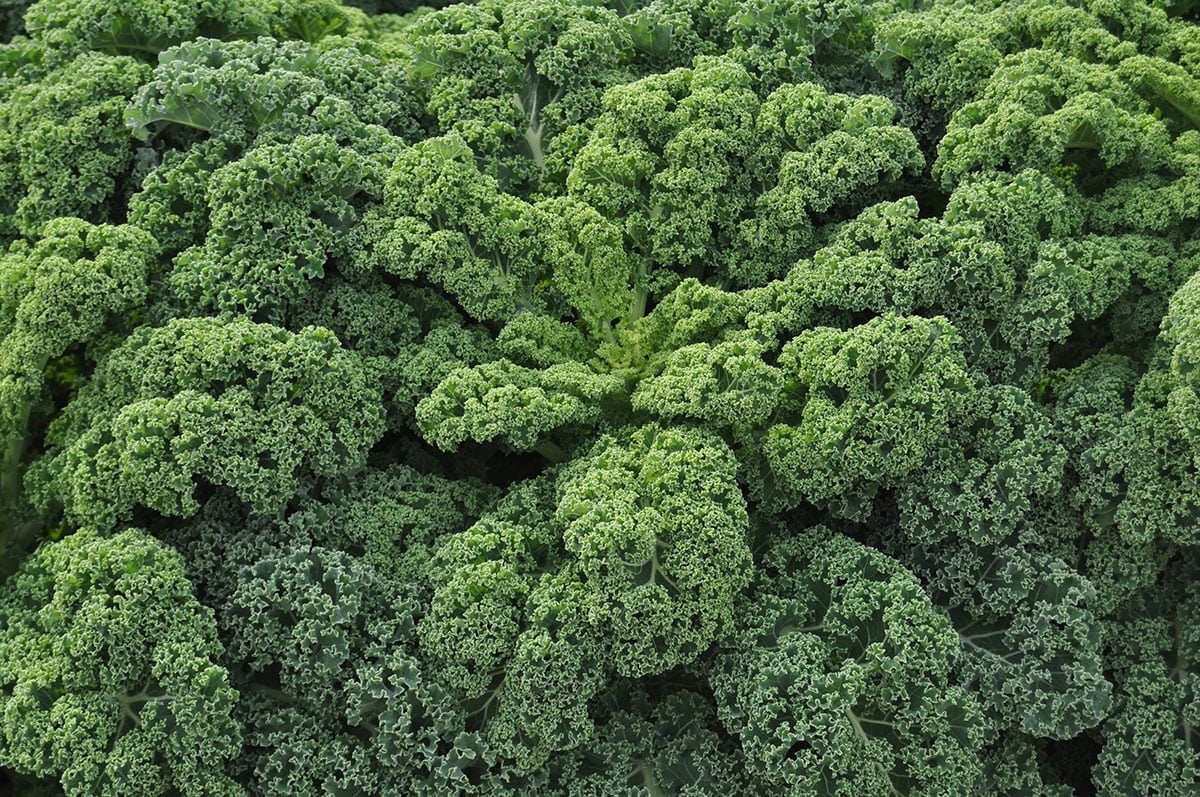
Prizm Hybrid Kale
Prizm kale has very curly leaves with all but no stem. It is sweetest when young, like most kale varieties, and good in salads, on sandwiches, or in smoothies when cut young. Give it a shot in this tropikale smoothie, and don’t listen to those people who mock the idea of a kale smoothie. They can be both delicious and nutritious.
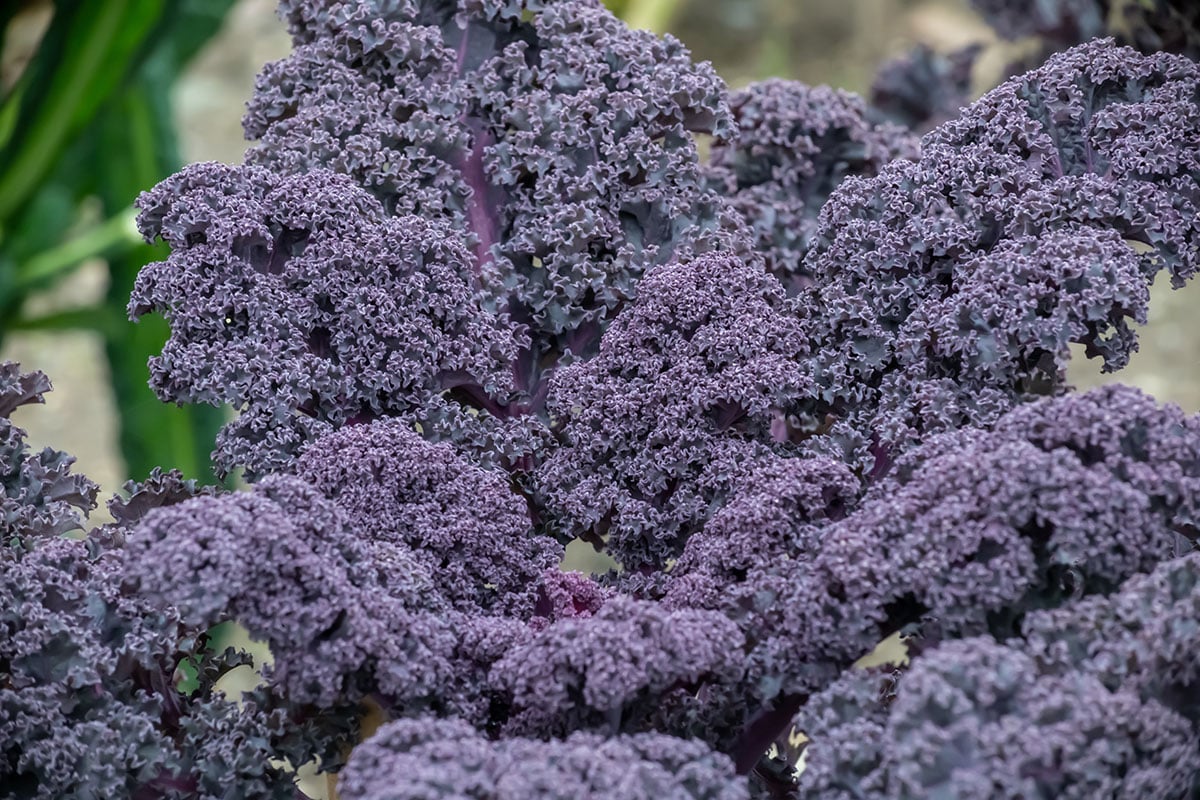
Purple Kale
Purple kale is often grown ornamentally, but we aren’t going to put it in that category as it has a lot of culinary uses as well. Its deep purple color is definitely aesthetic, but it is a good option to sauté, bake, and to use in soups. If you want to keep its purple color cut it into a salad as the color fades with cooking. For any use be sure to cut off the stems as they are tough.
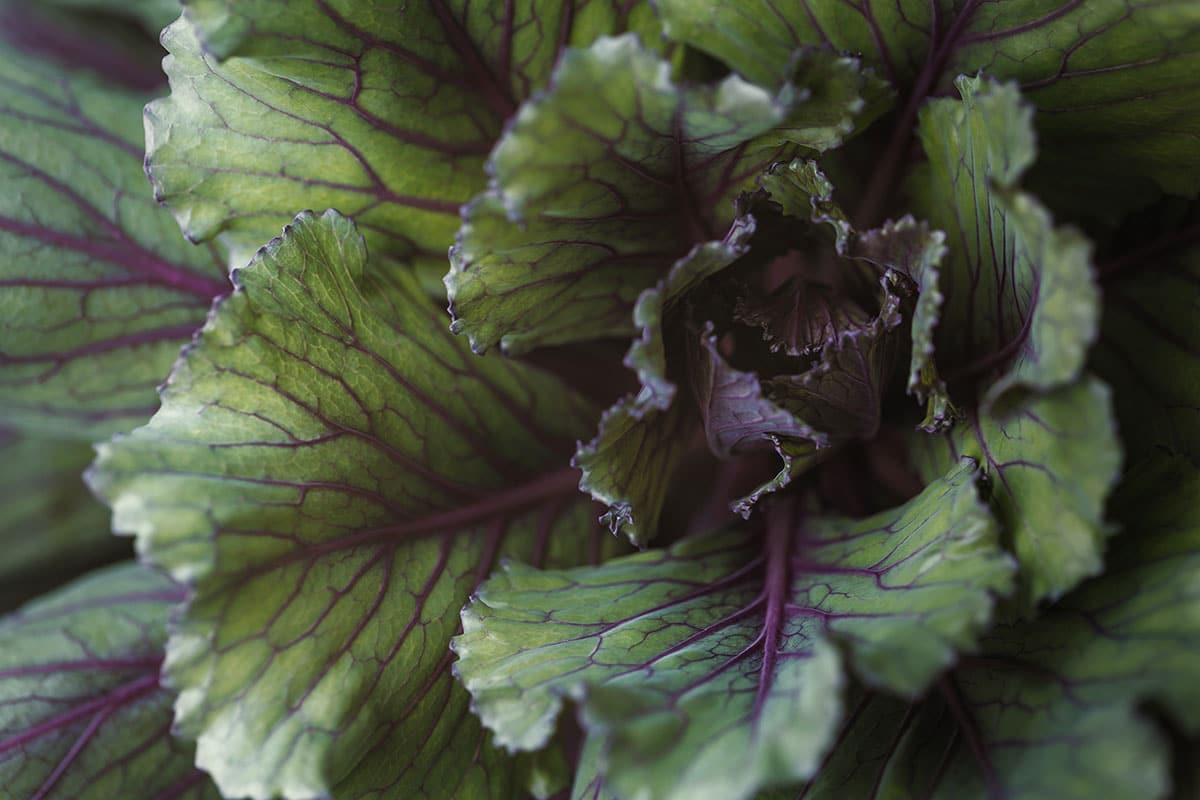
Red Russian Kale
Also known just as Red Kale or Scarlet Kale, this variety is very similar to curly kale except with a red coloring. It is a good kale to eat raw in salads or on sandwiches as it is often considered to be the sweetest kale variety. Red kale doesn’t hold up well to cooking, but some cooks swear by it for sautéing. You probably won’t find red kale at your grocery, but check your local farmer’s market or consider growing it yourself.
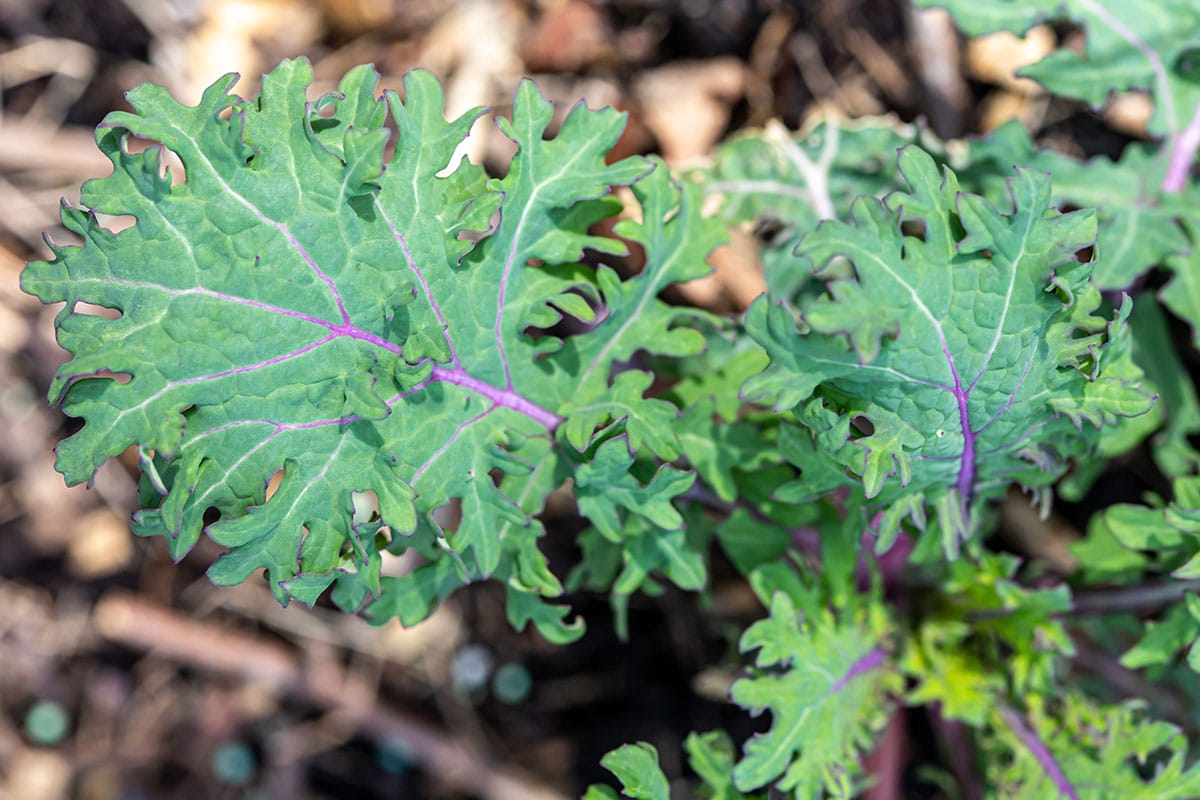
Red Ursa Kale
Red ursa is a classic looking kale with green leaves and red ribs & veins. It tastes the best when harvested young as a microgreen. It is a good home grown kale as it tolerates both heat and cold quite well.
Red Winter Kale
Red winter is similar to Red Russian in appearance, but also in sweetness and the softness of its leaves. Try it in this quick and easy Kale Salad.
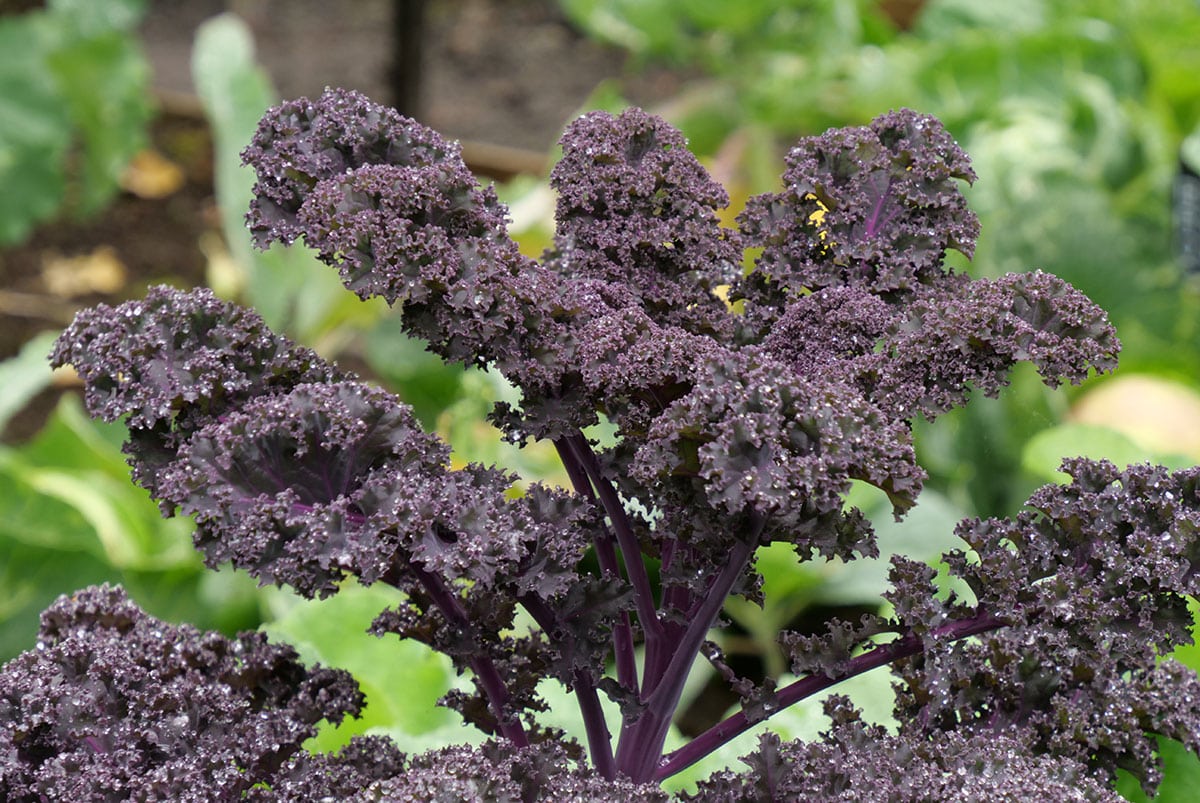
Redbor Kale
Rebor is yet another kale variety that could be listed under Ornamental Kale. Its red to red-purple ruffled leaves are certainly aesthetic.It is, however, better tasting than most ornamental kale varieties. It is great roasted just massage the leaves a bit with olive oil before putting them in the oven. Redbor is also often used in soups and stews. It is a good option for Easy Air fried Kale Chips.
Siberian Kale
Siberian kale is very different from other varieties of kale as it is related to the rutabega more than other kale varieties. As its name “Siberian” would suggest it is a cold-resistant kale with wide flat leaves that are more tender with a milder taste than some other varieties resulting in Siberian kale being readily eaten raw. Siberian kale is known mostly for the oil produced by its seeds known as rapeseed oil.
Thousand Head Kale
This kale is actually a cabbage, but from a culinary perspective it seems like a kale. Thousand head grows to 6 feet tall with leaves up to 3 feet long. Like many other varieties you can cut this kale early as a baby kale for salad, or sauté the larger leaves. Thousand head originated in France and was used in the United Kingdom for animal fodder. It has since been “discovered” for its culinary uses.
Tronchuda Kale
This is yet another Portuguese kale variety. Its blue-green leaves can be described as distinctive as is its taste. Tronchuda tastes more like cabbage than the usual bitter taste associated with kale. This Creamy Orzo with Caramelized Onions and Kale Recipe would be a good use for this kale as the recipe calls for sautéing the leaves.
White Russian Kale
This kale was developed in Oregon in the 1980s to be crisp, sweet, and tender. White Russian leaves are flat with serrated edges that compliment any selection of baby kales well. It is a cross of Red Russian and Siberian kales and for the home growers it is extremely cold resistant.
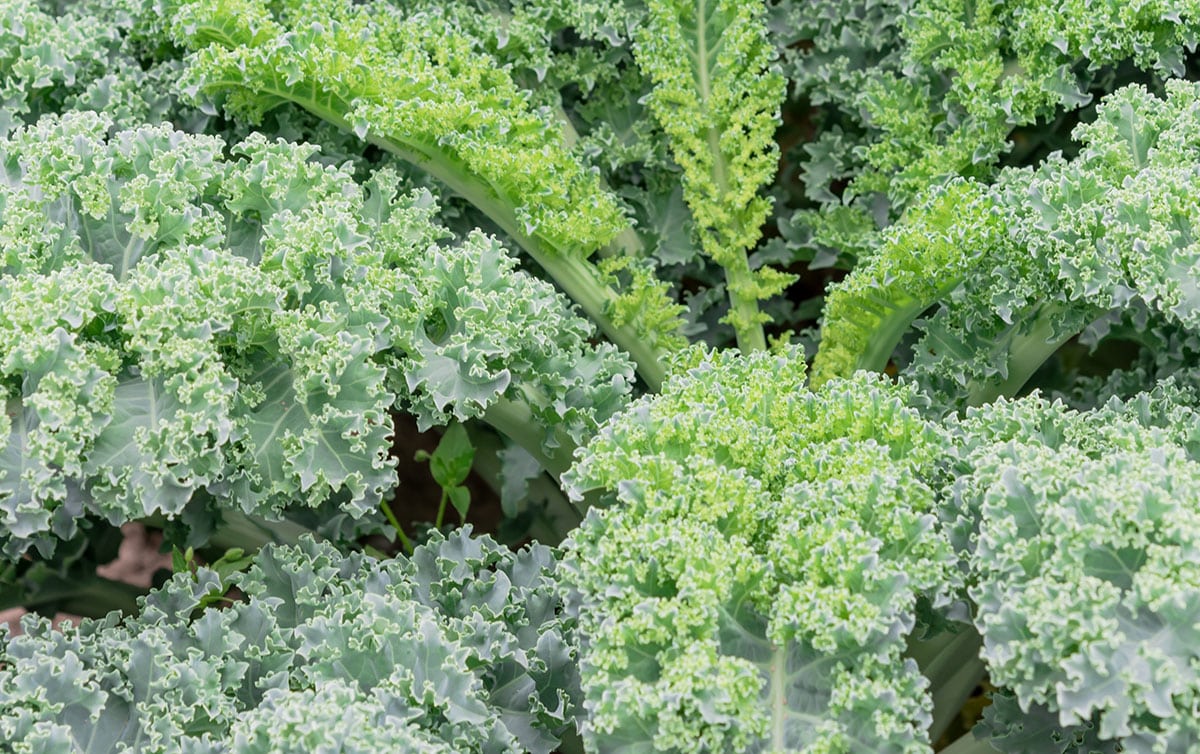
Winterbor Kale
Winterbor kale is a curly variety, and one of the types most found in grocery stores. It is known for its blue-green leaves with heavily ruffled edges. This is a favorite in The Netherlands where it is boiled, chopped, and mixed into mashed potatoes to be served with smoked sausage. I’d like to say we have a great recipe for that, but we just haven’t gotten to that yet.
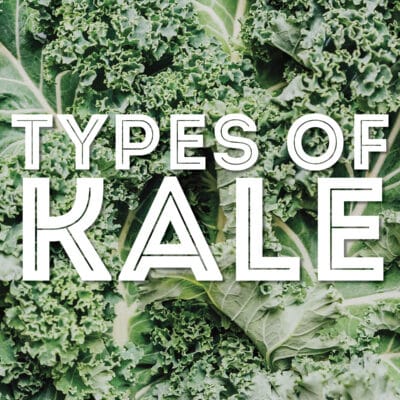
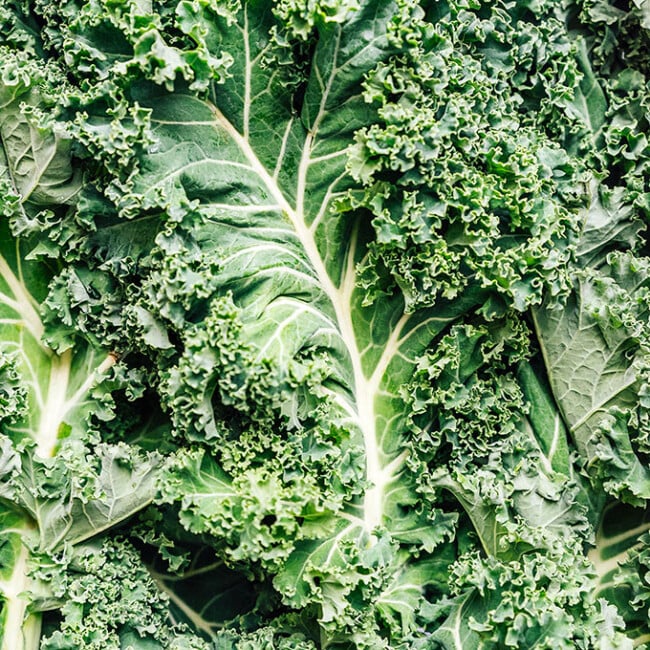
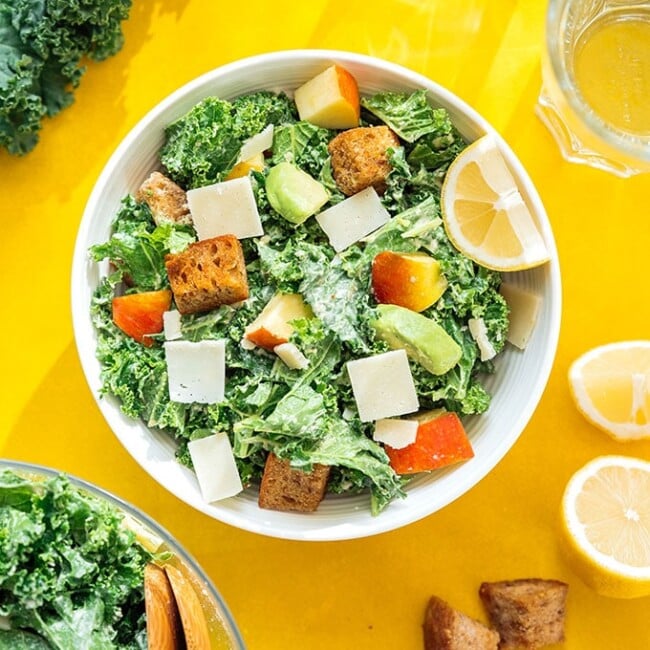
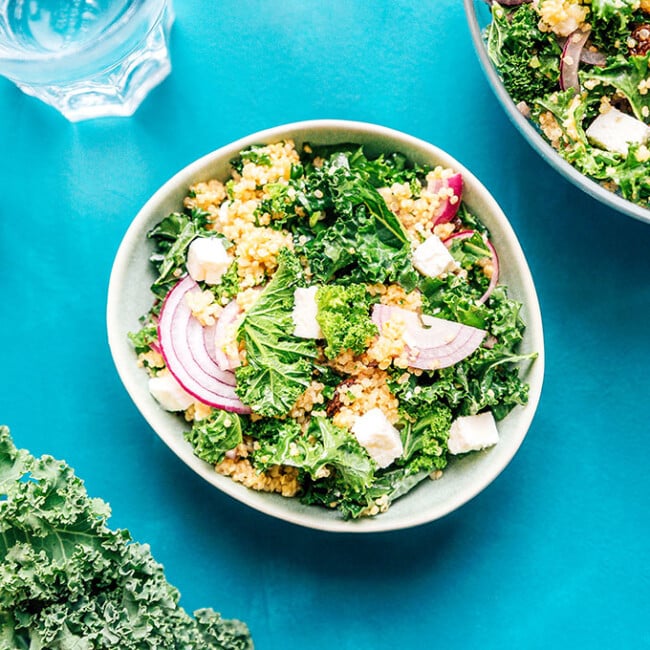
Laurence Lim says
Which one do not produce seed for propagatio. I have 3 kale plant none flower of produce seed.
Sarah Bond says
Here’s a good article on kale propagation! 😀